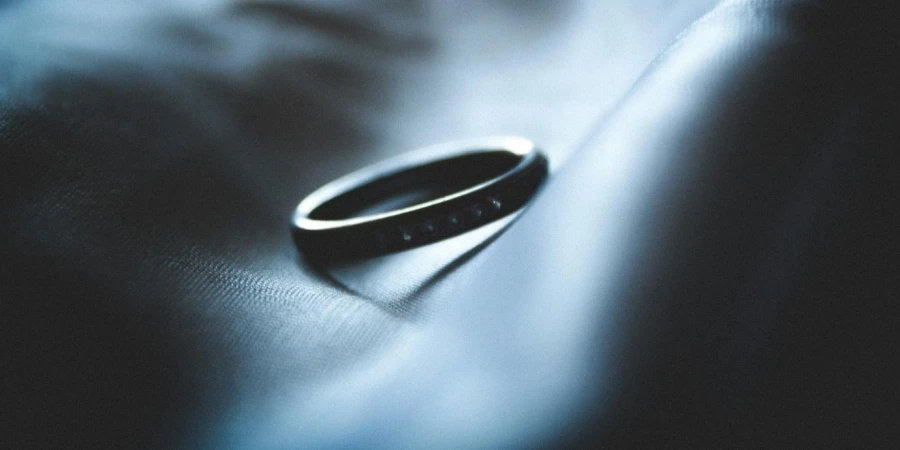The smart rings market is rapidly emerging as a critical segment in wearable technology, driven by their multifunctional capabilities, from advanced health monitoring to seamless contactless payments. Technological progress has made these devices more useful for professionals who want to keep up with market developments.
Buyers need to grasp these patterns and developments in ring usage to remain competitive in the changing world of technology. This article offers valuable perspectives on market shifts and technological advancements.
Table of Contents
● Market overview: Scaling new heights in wearable tech
● Key technology and design innovations: Redefining smart wearables
● Top-selling models driving market trends: Leaders shaping consumer choices
● Conclusion
Market overview: Scaling new heights in wearable tech

Market size and growth
The worldwide market for smart rings reached $210 million in 2023. It is anticipated to see significant expansion with an estimated compound annual growth rate of 24% from 2024 to 2032.
The growth trend is driven by the growing use of cutting-edge technologies in smart rings that enable a range of functions, such as health tracking and safe transactions. It is projected that by 2032, the market will approach USD 1 billion as there is a growing interest in tech from consumers and businesses.
Market drivers
The smart ring market is experiencing growth for several reasons. One key factor is the rising awareness of health among customers. This trend has resulted in a need for gadgets that can monitor health indicators like heart rate, sleep patterns, and even blood oxygen levels.
The increasing use of smartphones and other intelligent gadgets also boosts market expansion since smart rings easily connect with these devices to improve user satisfaction levels. Furthermore, the emergence of contactless payment systems has speeded up the acceptance of smart rings, especially following the COVID-19 outbreak, which increased the need for contact-free transactions.
Regional insights
The Asia-Pacific region is expected to lead the growth of the smart rings market, with a projected CAGR exceeding 25% during the forecast period. This rapid expansion is driven by government-led digitalization initiatives in countries such as China and India, where efforts to promote cashless economies are gaining momentum. The region’s growing middle class, coupled with increased smartphone penetration, further supports the widespread adoption of smart rings. North America and Europe also remain significant markets, with strong demand driven by technological advancements and the presence of leading smart ring manufacturers.
Key technology and design innovations: Redefining smart wearables

Advanced health monitoring
Smart rings are changing the game in monitoring our well-being by integrating sensors into their designs. This helps to measure various aspects of our body functions seamlessly without the need for invasive methods or procedures. Some smart rings even feature cutting-edge technology like continuous glucose monitoring (CGM), which utilizes optical sensors to track glucose levels in the interstitial fluid beneath the skin in real time, with precision and accuracy.
The ring includes metal electrodes and advanced algorithms that analyze the heart’s electrical activity to enable ECG functions to detect issues such as arrhythmias by measuring the time intervals between heartbeats in milliseconds.
Moreover, blood pressure monitoring is accomplished through pulse wave analysis. This method measures the time it takes for blood pressure waves to move through arteries, enabling individuals to keep track of their diastolic pressures without using a cuff.
Fitness tracking evolution
Improvements in sensor technology have driven the progress of fitness monitoring in smart rings. Multi-sport modes utilize 9-axis motion sensors, including accelerometers, gyroscopes, and magnetometers, to accurately identify and distinguish between activities. For example, these sensors can discern between a running step and a cycling pedal stroke, ensuring that the ring offers data customized for workouts.
The AI-driven analysis relies on sophisticated machine learning algorithms to analyze information gathered from these sensors. It provides tailored recommendations derived from the user’s behavior patterns, like recovery periods and calorie burn rates. The ring also tracks heart rate zones efficiently for an enhanced fitness experience through the incorporation of high-tech photoplethysmography (PPG) sensors that measure blood volume variations beneath the skin for heart rate monitoring during strenuous workouts.
IoT integration and smart home control

Smart rings are becoming more and more essential in the world of the Internet of Things (IoT). They provide users with effortless management of devices through connectivity features such as Bluetooth Low Energy (BLE) and Near Field Communication (NFC). These rings can create links with home automation systems that allow users to operate appliances, handle lighting, and ensure security with motion.
For instance, a smart ring with BLE can unlock a door lock when a user gets near it automatically, and NFC can help with payments and data transfer with a tap. Integrating voice assistants is improved by low-latency connections and built-in microphones, enabling users to give voice commands from their rings. The increased adoption of authentication protocols guarantees that these interactions stay protected, safeguarding user information and privacy.
Design trends
Smart rings have come a long way in their design by focusing on functionality and aesthetics. Many models incorporate titanium alloy to ensure that the rings are lightweight and highly durable, boasting a tensile strength that surpasses normal materials by far. These rings frequently come with ceramic coatings or diamond-like carbon (DLC) finishes, improving scratch resistance and upholding a sleek and polished look.
The inner parts are meticulously shrunk to fit into a ring that’s usually only 1.5 to 2 millimeters thick and holds everything from tiny processors to sensors in a compact shape. To prevent skin irritation and make the rings comfortable for long periods of wear, hypoallergenic materials such as medical-grade silicone or epoxy resin are used in the inner layer. Additionally, some versions feature components or outer casings, allowing users to personalize their rings while keeping them current with technological advancements.
Top-selling models driving market trends: Leaders shaping consumer choices

Oura Ring 3: The gold standard in health tracking
The Oura Ring 3 is recognized as a top-tier ring in the market. It is known for its exceptional sleep-tracking features that are highly precise and reliable for users seeking detailed health insights on their sleep stages and heart rate variability (HRV). By incorporating photoplethysmography (PPG) sensors, body temperature sensors, and a 3D accelerometer technology into its design, users can benefit from monitoring their sleep quality and even tracking fluctuations in body temperature effectively. Despite being expensive and needing a subscription for premium features access, the Oura Ring 3 is still dominating the market because of its reputation and the wealth of data it offers, which appeals to health-concious customers.
Ultrahuman Ring Air: The comfort-centric smart ring
The Ultrahuman Ring Air is known for its focus on comfort. It is considered one of the best smart rings on the market, weighing between 2.4g to 3.6g depending on the size you choose. The ring has sensors that monitor your heart rate, skin temperature, and sleep patterns, providing a user-friendly experience. Its interior features an epoxy resin coating that’s hypoallergenic. However, the matte black finish of the ring is susceptible to scratches, which may diminish its appearance over time. While it has a downside, the Ultrahuman Ring Air stands out in the ring market for its balance of comfort and practicality and its ability to gather data effectively. This makes it a top choice for users who value comfort around the clock.
McLear RingPay 2: The leader in contactless payments
The McLear RingPay 2 stands out in the market by specializing in contactless payments instead of smart rings that focus on healthcare. Using NFC technology, the RingPay 2 enables users to conduct transactions with a tap like a contactless card. Additionally, it comes equipped with security features, like the option to halt payments in case of ring loss. The RingPay 2 is crafted to be lightweight and inconspicuous, at 5 grams in weight. It is a good fit for individuals who value ease during their day-to-day transactions over other functionalities like health tracking or fitness monitoring features commonly found in wearable devices on the market today.
RingConn and Circular Ring Slim: Budget-friendly contenders
The RingConn and Circular Ring Slim stand out as strong, budget-friendly choices for consumers seeking more affordable options. The RingConn boasts a range of health monitoring functions, like heart rate tracking and sleep analysis, without subscription fees. It’s crafted from titanium to withstand scratches while keeping costs down. On the other hand, the Circular Ring Slim brings innovative features such as haptic feedback and a customizable outer shell, which adds a level of personalization rarely seen in this category. However, it falls short in some areas, such as battery life and app usability, with the battery lasting only 2-4 days, depending on usage. While both rings offer great value, the RingConn is generally more reliable in terms of performance, while the Circular Ring Slim appeals to those looking for customization and unique features.
Go2Sleep Ring: Specialized for sleep tracking
The Go2Sleep Ring is another noteworthy model, primarily designed for nighttime use and focused on providing detailed sleep data. Weighing less than 10g, this ring tracks various sleep metrics such as heart rate, HRV, and blood oxygen levels (SpO2), offering insights that help users improve their sleep quality. Unlike other smart rings that provide round-the-clock tracking, the Go2Sleep Ring is optimized for wearing during sleep, making it ideal for those whose primary concern is sleep health. Its minimalist design and specific focus make it a practical option for users who want a dedicated sleep tracker rather than an all-purpose smart ring.
Conclusion

The smart rings market is witnessing rapid innovation and significant growth, driven by advancements in health monitoring technology and the increasing demand for consumer convenience. With leading models like the Oura Ring 3 and McLear RingPay 2 setting high standards for precision and functionality, the market is poised for continued expansion.
As these devices evolve, their role in daily life—from health tracking to seamless payments—will likely become even more integral, shaping the future of wearable technology and offering new opportunities for both businesses and consumers.




